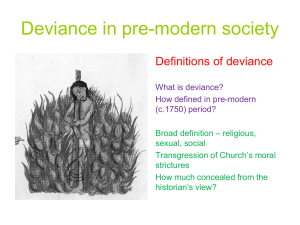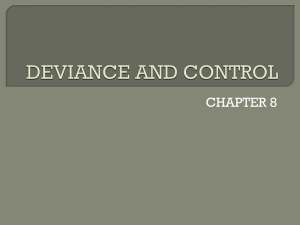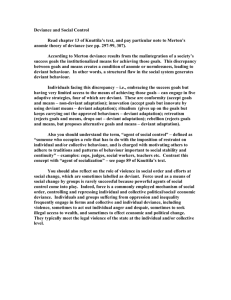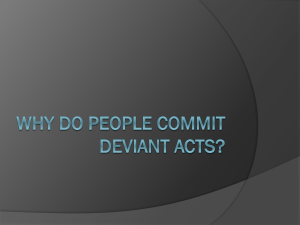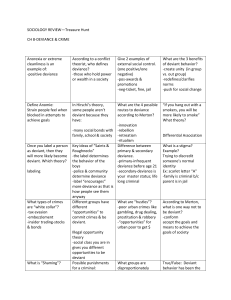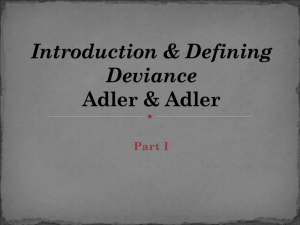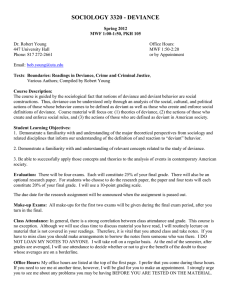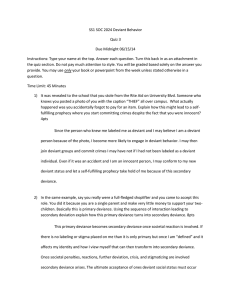0.18Mb
advertisement
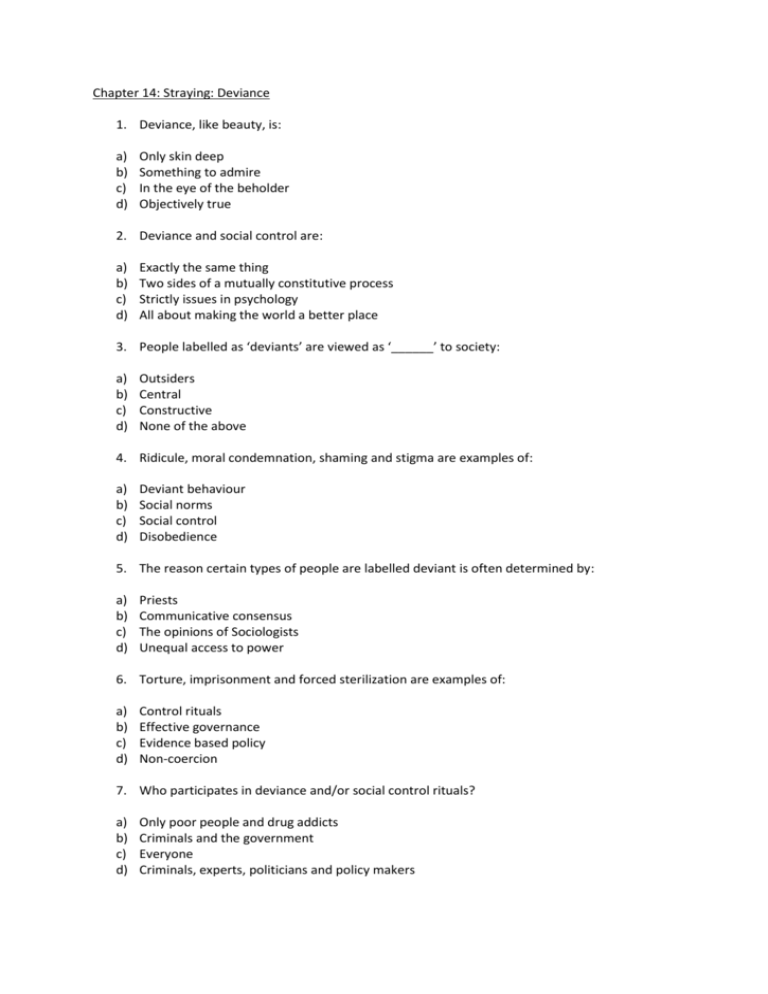
Chapter 14: Straying: Deviance 1. Deviance, like beauty, is: a) b) c) d) Only skin deep Something to admire In the eye of the beholder Objectively true 2. Deviance and social control are: a) b) c) d) Exactly the same thing Two sides of a mutually constitutive process Strictly issues in psychology All about making the world a better place 3. People labelled as ‘deviants’ are viewed as ‘______’ to society: a) b) c) d) Outsiders Central Constructive None of the above 4. Ridicule, moral condemnation, shaming and stigma are examples of: a) b) c) d) Deviant behaviour Social norms Social control Disobedience 5. The reason certain types of people are labelled deviant is often determined by: a) b) c) d) Priests Communicative consensus The opinions of Sociologists Unequal access to power 6. Torture, imprisonment and forced sterilization are examples of: a) b) c) d) Control rituals Effective governance Evidence based policy Non-coercion 7. Who participates in deviance and/or social control rituals? a) b) c) d) Only poor people and drug addicts Criminals and the government Everyone Criminals, experts, politicians and policy makers 8. To secure common sense in the interests of power creates: a) b) c) d) Good policy The basis of democracy Social harmony Cultural hegemony 9. Between 1980 and 1991 how many Salvadorian civilians were secretly killed or made to ‘disappear’ by United States supported death squads? a) b) c) d) Approximately 1,000 Approximately 5,000 Approximately 75,000 The United States did not support such actions 10. Which social theorist pioneered the functional account of deviance? a) b) c) d) Karl Marx Max Weber George Herbert Mead Emile Durkheim 11. Positive functions of deviance include: a) b) c) d) Tension reduction, boundary setting and group solidarity Group Solidarity, moral conditioning and pathological social conditions Moral conditioning, innovation and deviant adaptations Tension reduction, anomie and cultural Innovation 12. Talcott Parsons pictured society as: a) b) c) d) Constantly experiencing profound change Resistant to change An imaginary construction A self-adjusting system 13. The term ‘anomie’ was used by Durkheim to describe: a) b) c) d) The animalistic nature of humans A state of normlessness Social reproduction through imitation A type of Japanese cartoon featuring deviant acts 14. Which of the following is NOT one of Merton’s deviant ‘adaptations’? a) b) c) d) Innovation Rebellion Formalism Ritualism 15. Selling illegal drugs, engaging in prostitution and corporate price-fixing are examples of what kind of deviant adaptation? a) b) c) d) Ritualism Innovation Formalism Conformity 16. Who wrote the famous paper ‘Social Structure and Anomie’? a) b) c) d) Max Weber Talcot Parsons Jacques Derrida Robert K. Merton 17. Learning to be deviant takes place in: a) b) c) d) The same way as learning anything else Poor Neighbourhoods and sociology lectures Low socio-economic areas and prisons Dramatically different ways to formal education 18. Which of the following is not one of Gabriel Tarde’s ‘laws of imitation’? a) b) c) d) the law of insertion the law of interpretation the law of close contact the law of imitation of superiors by inferiors 19. According to Edwin H. Sutherland, to succeed in deviance one must master: a) b) c) d) the tricks of the trade the art of war cracking a safe one’s irrational impulses 20. Individuals who are labelled deviant are sometimes pushed in the direction of: a) b) c) d) Prisons and police stations Anti-social behaviour Drug rehabilitation programmes Secondary deviance
